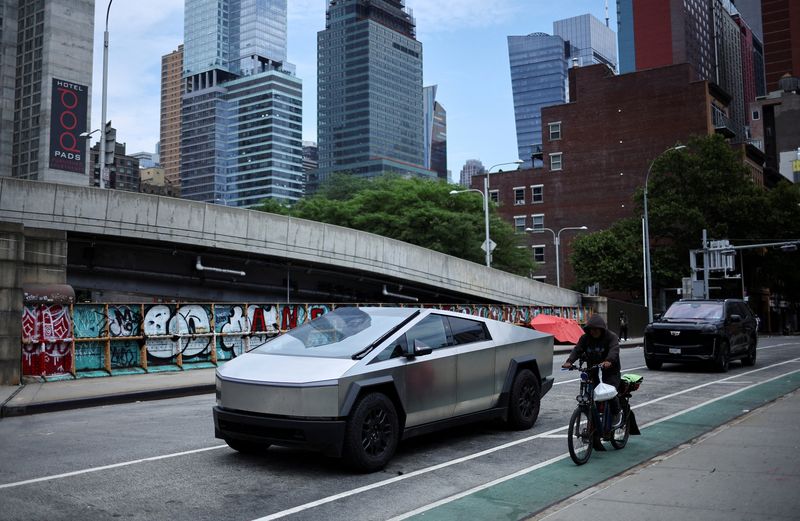Street Calls of the Week
Investing.com -- Despite price cuts in the fourth quarter, Tesla (NASDAQ:TSLA) managed to deliver only around 15,000 Cybertrucks during the period and an estimated 35,000 to 40,000 units for the year, a far cry from Tesla’s initial claim of 2 million orders for the vehicle. According to Bernstein analysts, this underperformance raises questions about whether the Cybertruck is “a bust.”
The analysts believe that the Cybertruck is not gross margin positive “and we struggle to see what the future for the product is, given flagging profitability and niche demand,” they said.
"We highlight Cybertruck as a massive strategic miscalculation and opportunity cost for Tesla, given that it took 4 years to develop, and inevitably diverted attention away from a lower priced offering, which Tesla is now in desperate need of," analysts led by Toni Sacconaghi added.
Bernstein also points out Tesla's declining auto gross margins amid aggressive price promotions and financing incentives in Q4.
Excluding regulatory credits and one-time software/FSD recognition, they forecast auto gross margins to drop below 15%, lagging behind all U.S. and European internal combustion engine manufacturers in their comparison set, except for Ford (NYSE:F).
The analysts forecast Tesla’s annual earnings to decline from $2.60 in 2023 to approximately $2.10 in 2024, even with an additional $1 billion in regulatory credits.
Tesla’s progress in the robotaxi space is also under scrutiny. Despite the company shifting investor focus toward autonomy, Bernstein’s team is skeptical about Tesla's ability to outpace competitors.
They cited the company’s "more limited sensor suite," potential regulatory hurdles, and its less pronounced advantage in accident simulation training compared to rivals like Waymo.
Even if Tesla achieves Level 5 autonomy first, the analysts questioned whether the company could sustain dominance.
"Increased AI computing power will likely allow others to catch up relatively quickly, democratizing the technology, eliminating excess pricing premiums, and making it difficult for Tesla to capture sustained outsized profits,” analysts noted.
Tesla’s Q4 deliveries rose 2% year-over-year to 495,600 but missed estimates, leading to a slight decline in annual deliveries. Energy storage shipments grew 244% to 11 GWh during the quarter.
